Despite the uncertainty and new demands that two-plus years of the pandemic have created, now is the time for hospitals to create a purposeful strategy to address social determinants of health (SDOH). COVID-19 repositioned the importance of telehealth and outcome disparities. At their intersection is “digital,” the competency that determines whether people can actually use the tech tools that healthcare stakeholders have built for them. While digital needs are secondary to having somewhere to live and enough to eat, digital tools are how people often access needed resources and are a primary point of intersection between providers and the populations they serve — patients and the broader community. This blog details why digital competency is a distinct and important metric that can help hospitals calculate social risk to make better business decisions and create better outcomes. Digital competency: Definition, dimensions and risk Digital competency is one of six social determinants of...
